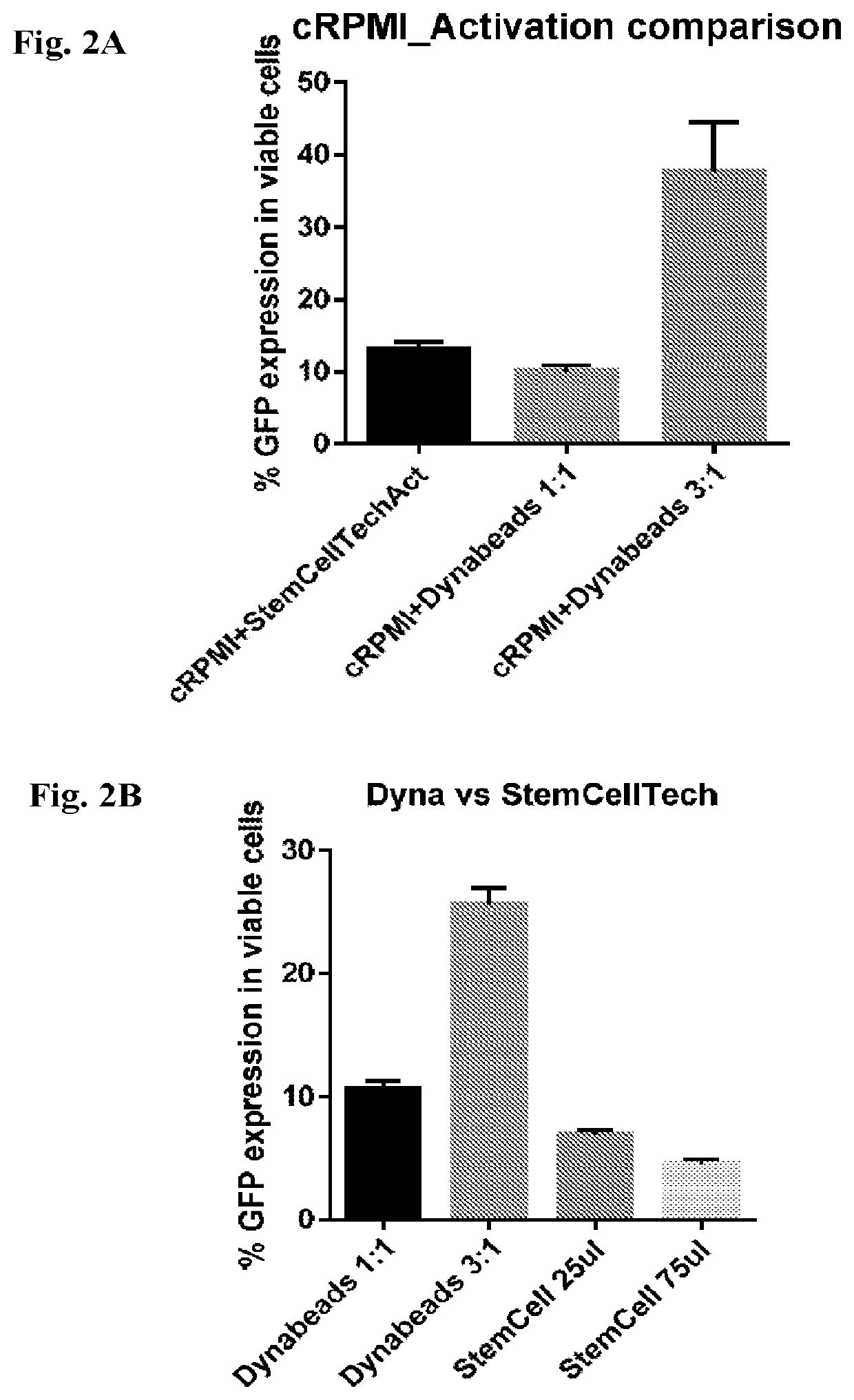Vector-free intracellular delivery by reversible permeabilisation
a reversible permeabilisation and intracellular technology, applied in chemical/physical processes, blood/immune system cells, enzymes, etc., can solve the problems of difficult conventional methods for transfection of suspension cells, e.g. non-adherent cells, and achieve the effect of reducing the number of transfections
- Summary
- Abstract
- Description
- Claims
- Application Information
AI Technical Summary
Benefits of technology
Problems solved by technology
Method used
Image
Examples
Embodiment Construction
lass="d_n">[0173]Difficulty in transfecting molecules into non-adherent cells has plagued research and therapeutic, e.g., cell therapy, gene therapy, genetic alteration, for decades. A reason for the difficulty in transfecting such cells may be that non-adherent cells lack cell surface heparan sulfate proteoglycans, molecules are responsible for adhesion of cells to the extra-cellular matrix. Transfection methods such as electroporation and / or nucleofections have drawbacks in that they compromise the viability of cells, the ability of the cells to resume proliferation after treatment, and the function of the cells, e.g., immune activity of lymphocytes. The transfection compositions and methods described herein (Soluporation) do not have such drawbacks and therefore are characterized as having significant advantages over earlier methods of introducing cargo molecules into mammalian cells, e.g., difficult-to-transfect non-adherent / suspension cells.
[0174]The invention is based on the s...
PUM
| Property | Measurement | Unit |
|---|---|---|
| pore size | aaaaa | aaaaa |
| mass | aaaaa | aaaaa |
| molecular mass | aaaaa | aaaaa |
Abstract
Description
Claims
Application Information
 Login to View More
Login to View More - R&D
- Intellectual Property
- Life Sciences
- Materials
- Tech Scout
- Unparalleled Data Quality
- Higher Quality Content
- 60% Fewer Hallucinations
Browse by: Latest US Patents, China's latest patents, Technical Efficacy Thesaurus, Application Domain, Technology Topic, Popular Technical Reports.
© 2025 PatSnap. All rights reserved.Legal|Privacy policy|Modern Slavery Act Transparency Statement|Sitemap|About US| Contact US: help@patsnap.com



